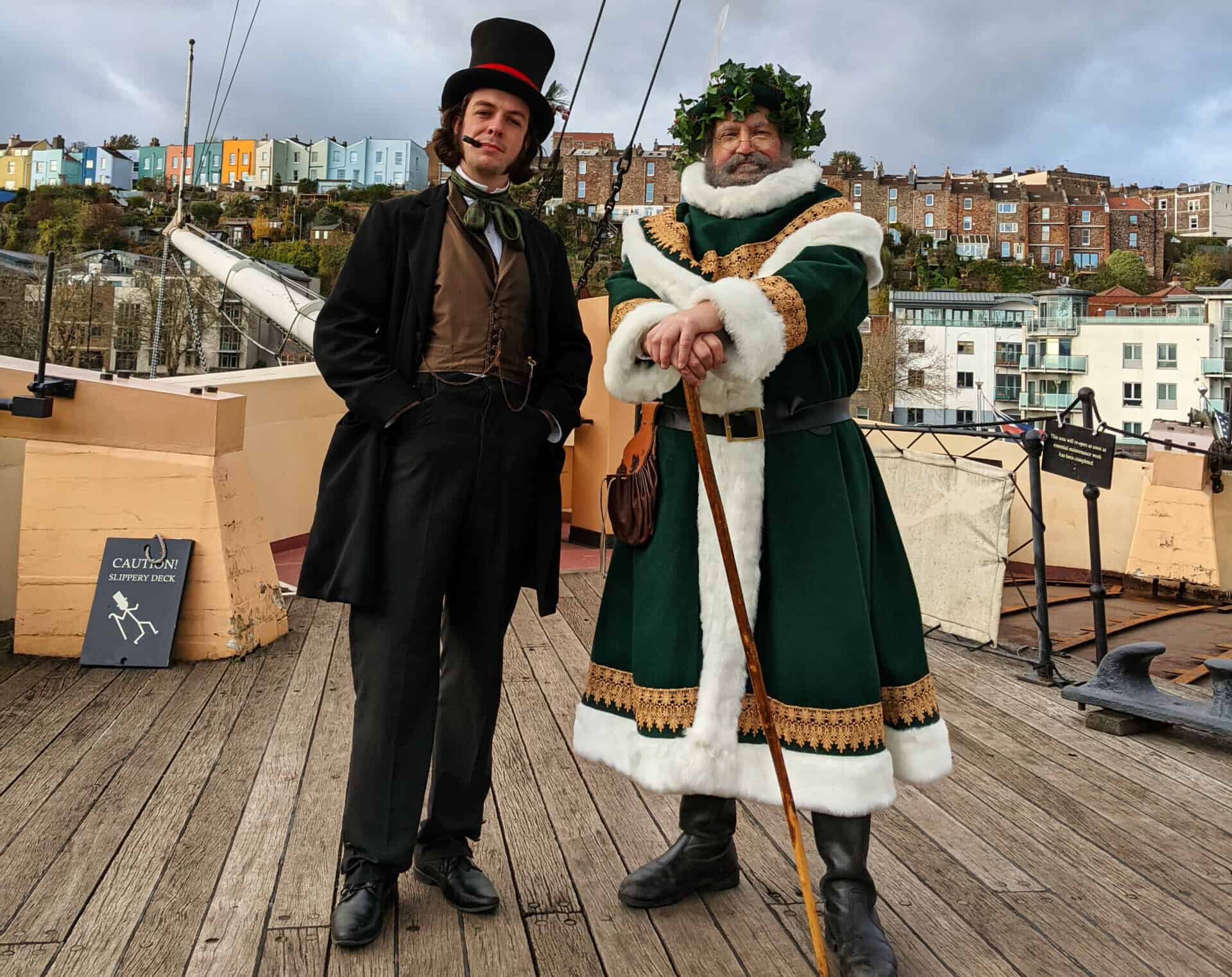The first thing we notice is that Christmas dinner smells pretty much the same as it does in 2017. Middle- and upper-class families are having goose, some of them stuffing it with a couple of rabbits to make it go further. Rural working class households will probably have beef, given to them by their employer as a gift. Later in the century turkey overtakes goose as the popular choice. Dickens can take responsibility for this, as Scrooge, in his attempt to make amends, upgrades the Cratchits’ goose to a turkey. But on Christmas Day 1843 it’s only 6 days since A Christmas Carol was published, so a goose is still the thing.
Our 1843 table will be groaning not just under the weight of the goose, but also the plum pudding. This will have been made on ‘Stir-up Sunday’, the day in Advent when the pudding and Christmas cake are made, in order to give them time to mature before Christmas Day. If they’re lucky, the family will find the trinkets that were dropped into the pudding mixture, which will predict their future in 1844. A coin spells wealth, a horseshoe good luck, a thimble spinsterhood and a ring marriage.
On the sideboard we can see a hamper from Fortnum and Mason, sent as a gift. Fifty years ago friends and family would have sent a huge Christmas pie, but hampers from the fashionable Piccadilly store are now much more modern and desirable.
It’s time to return to the 21st century, but let’s have a quick glass of Smoking Bishop first. The hot red wine, port, roasted oranges, sugar and spices will set us on our way. A couple of glasses of that and we might just be ready to head back to 2017 and meet Old Christmas with a happy face. Cheers!
Author: Rhian Tritton, Director of Interpretation, Collections and Education




